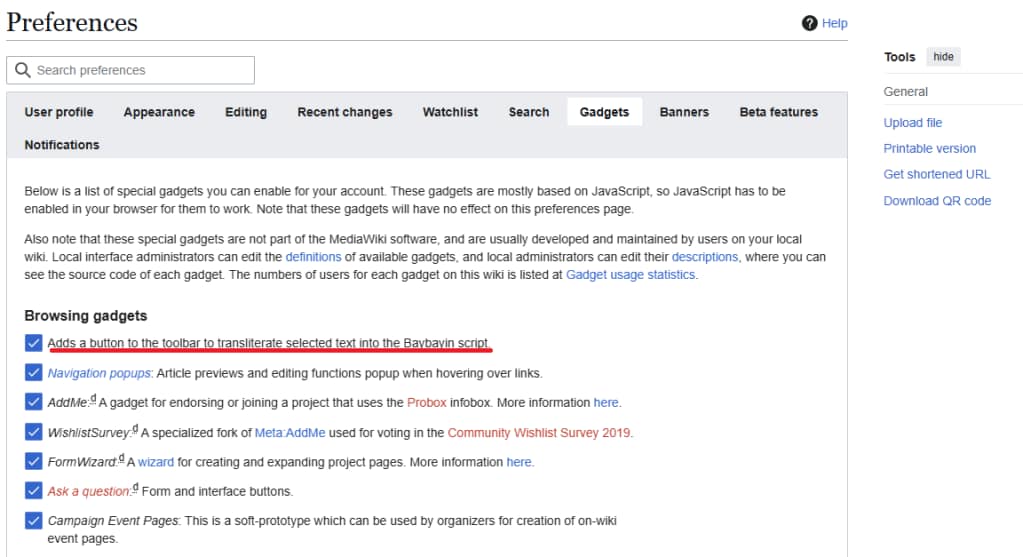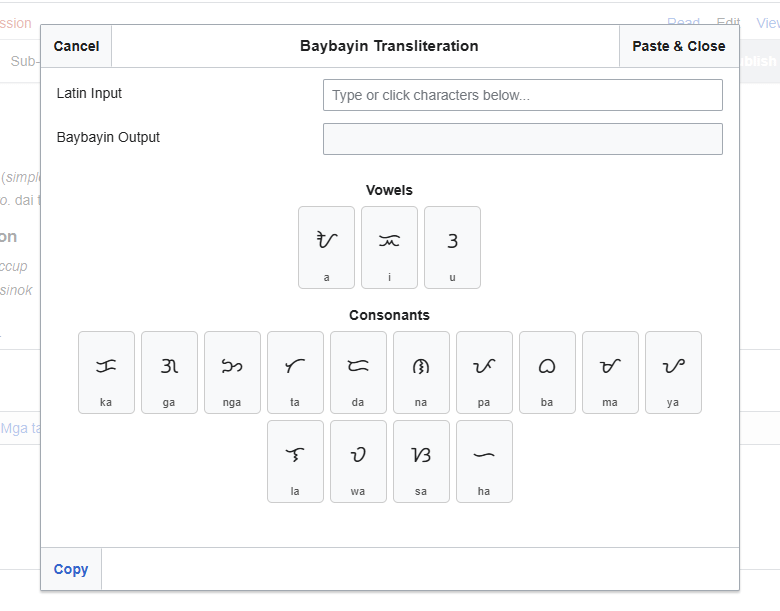Baybayin, an ancient Filipino script, is now being included in the Central Bikol Wiktionary, a project that provides free online access to Central Bikol vocabulary. This new tool, developed by Ballardmaize of the Wiki Advocates Philippines User Group, allows editors to transliterate Central Bikol words into the Baybayin script.
What Is Baybayin?
Baybayin is an indigenous pre-colonial writing system of the Philippines. It’s an abugida, a type of script where each consonant character has an inherent vowel sound, typically “a.” You add a small mark, called a kudlit, above or below the character to change this vowel sound to “i/e” or “o/u,” respectively. The name “Baybayin” comes from the Tagalog word for “to spell.”
The script was widely used across Luzon and other parts of the Philippines before Spanish colonization. Over time, it was replaced by the Latin alphabet; however, in recent decades, there has been a significant cultural renaissance to revive it. Today, it’s used in art, tattoos, and even on official documents, such as Philippine peso bills.
Why Baybayin in the Central Bikol Wiktionary?
While Baybayin is most commonly associated with the Tagalog language, it can also be used to spell Central Bikol words, though the region also has its own version, the Basahan. The integration of the Baybayin script into the Central Bikol Wiktionary is a significant step towards preserving this specific aspect of the country’s linguistic heritage.
Including Baybayin in the Central Bikol Wiktionary helps in several ways:
- Cultural Preservation: It reconnects the Central Bikol language with its pre-colonial roots, celebrating a form of writing that was almost lost.
- Educational Tool: It serves as a resource for people who want to learn the Baybayin script and see how it applies to their native language.
- Linguistic Context: It provides a richer understanding of the language by showing its historical orthography, demonstrating how sounds were represented before the Latin alphabet became dominant.
Here’s a simple guide on how to activate and use this tool on Wiktionary.
Step 1: Access Your Preferences: First, you need to go to your Wiktionary preferences page. This is where you can customize various features and add special tools to your account.
- Look for the “Preferences” link, usually located at the top-right corner of the page after you have logged in.
Step 2: Enable the Baybayin Gadget: Once you are on the Preferences page, navigate to the “Gadgets” tab. Gadgets are small tools that you can activate to enhance your editing experience.
- Under the “Browsing gadgets” section, you will find a list of available tools.
- Look for the option that says, “Adds a button to the toolbar to transliterate selected text into the Baybayin script.“
- Click the checkbox next to this description to enable the gadget.
- Don’t forget to click the “Save” button at the bottom of the page to apply the changes.

Step 3: Using the Baybayin Tool: With the gadget activated, you can now start adding Baybayin text to your Wiktionary entries.
- Open an entry for a Central Bikol word (like “sinok”) and click the “Edit” button. This should be in “Visual Edit” mode.
- Now, click on the Baybayin Tool text located at the right side of your screen.
- A new pop-up window titled “Baybayin Transliteration” will appear.
- In the “Latin Input” box, type the word you want to convert (e.g., “sinok”). As you type, the Baybayin script will automatically appear in the “Baybayin Output” box.
- You can also click on the individual Baybayin characters and kudlits (vowels) below the input boxes to manually create the transcription.


Once you’re satisfied with the transcription, you can copy the Baybayin text and paste it into the Wiktionary entry.

This tool is a valuable addition for anyone interested in preserving and promoting the rich cultural heritage of the Bicolanos and other Filipinos. It simplifies the process of adding Baybayin, making it accessible to more editors. By including the Baybayin script, the Central Bikol Wiktionary isn’t just a dictionary; it’s a dynamic repository of the country’s cultural and linguistic identity, helping to ensure that this beautiful ancient script isn’t just a relic of the past but a living part of the future.
[event_credits]
